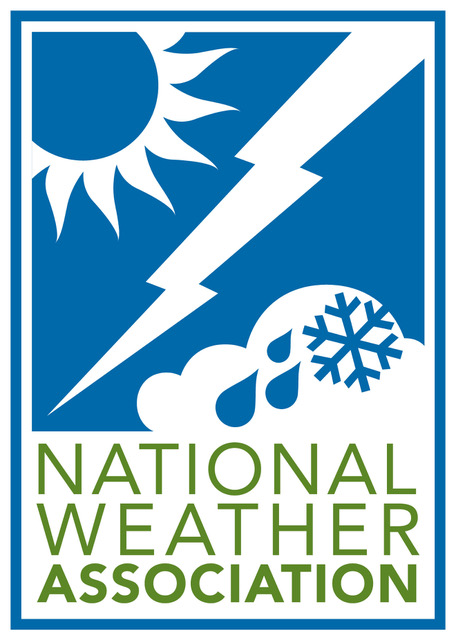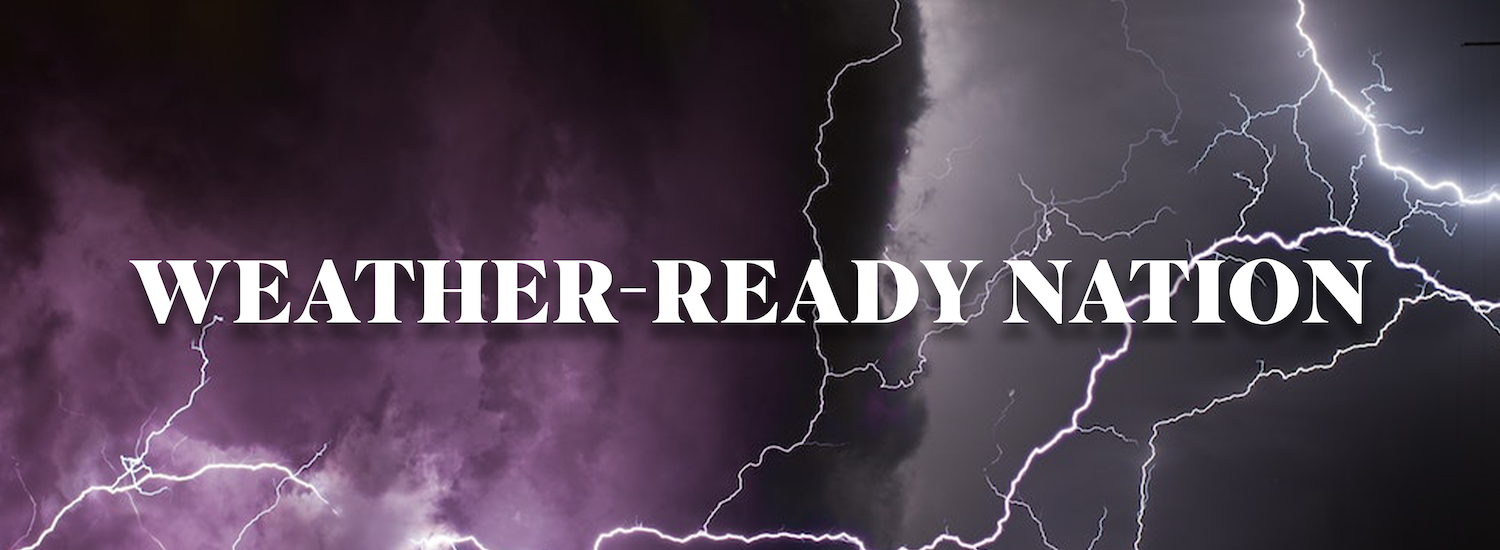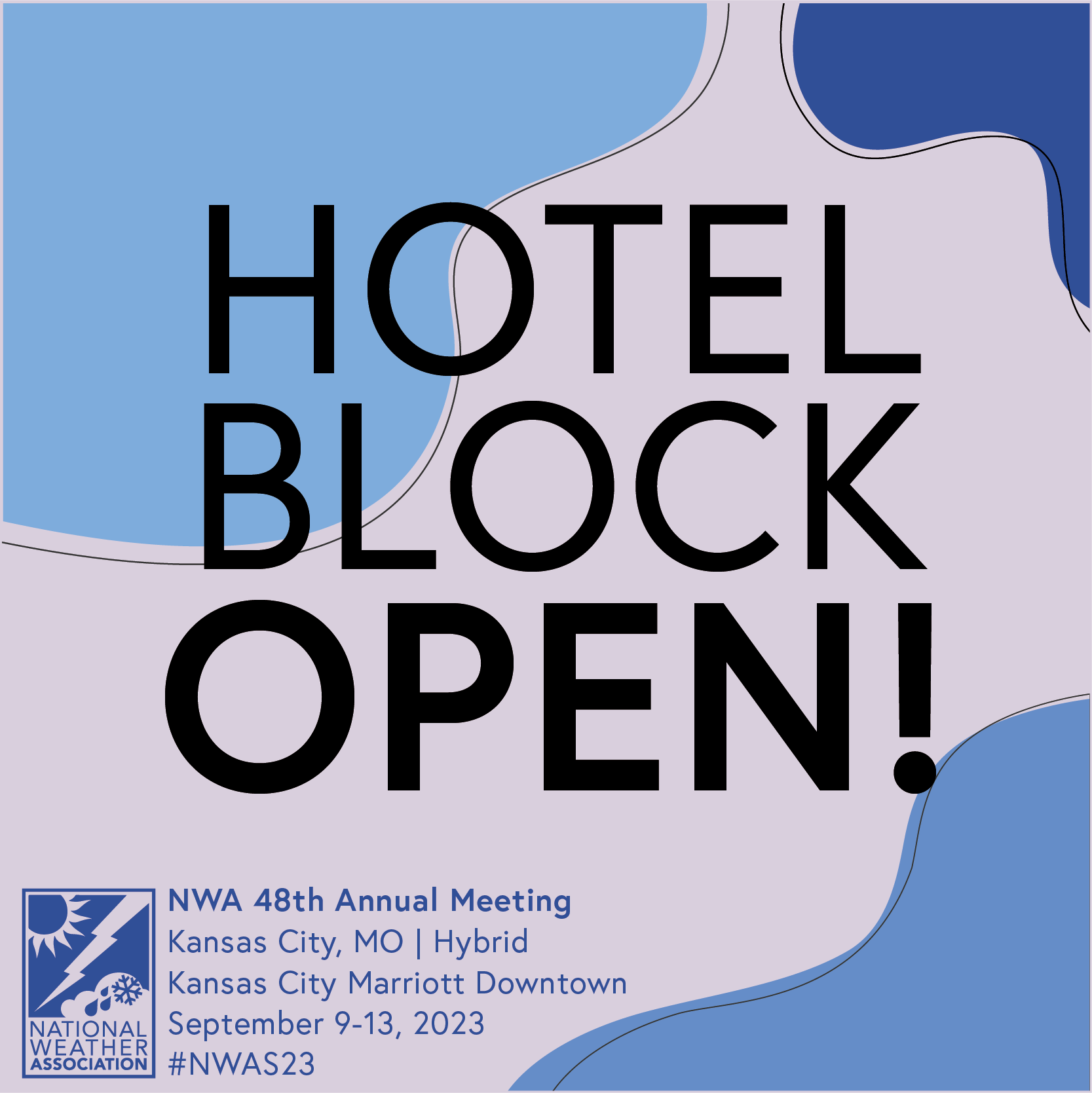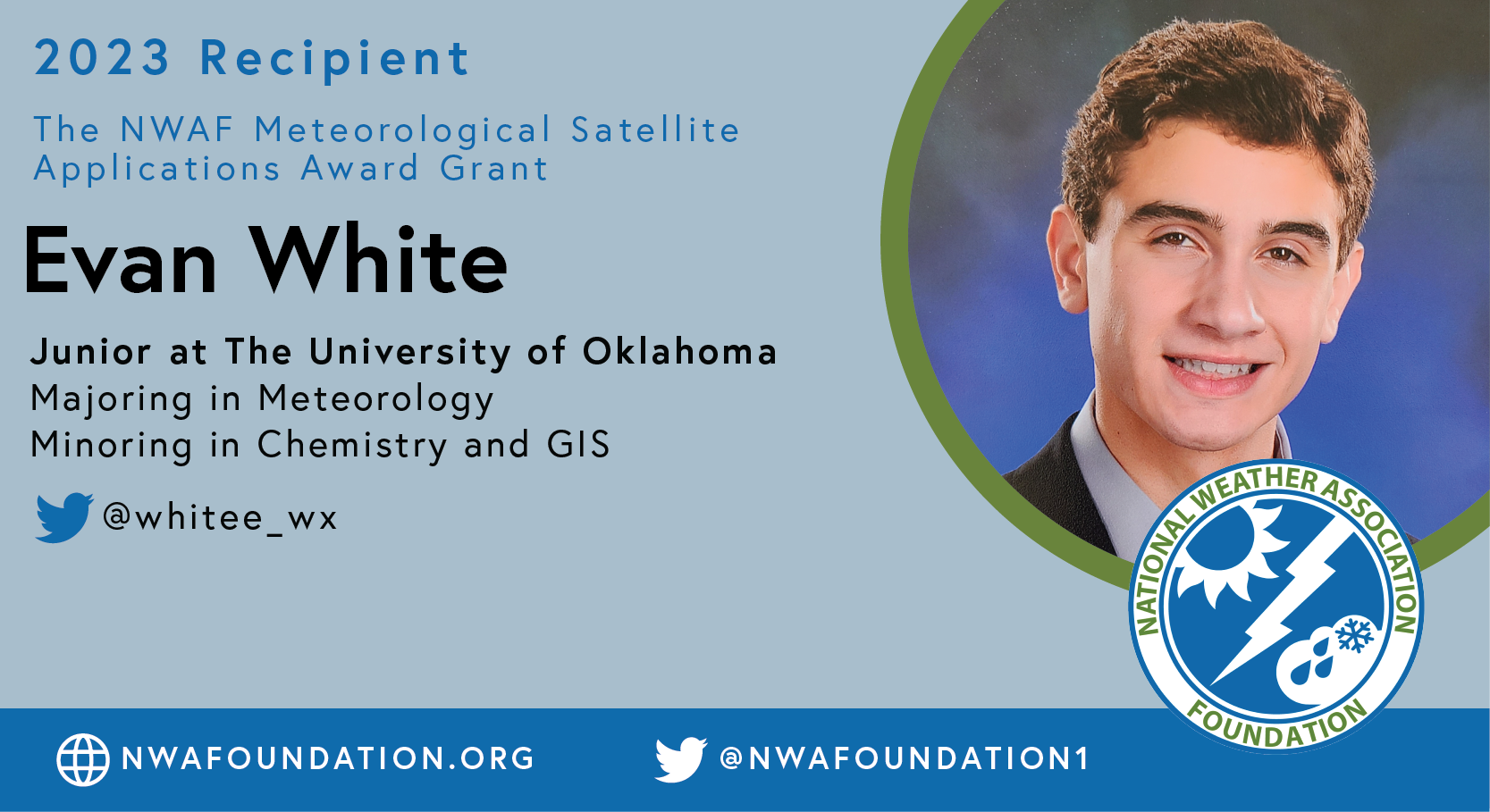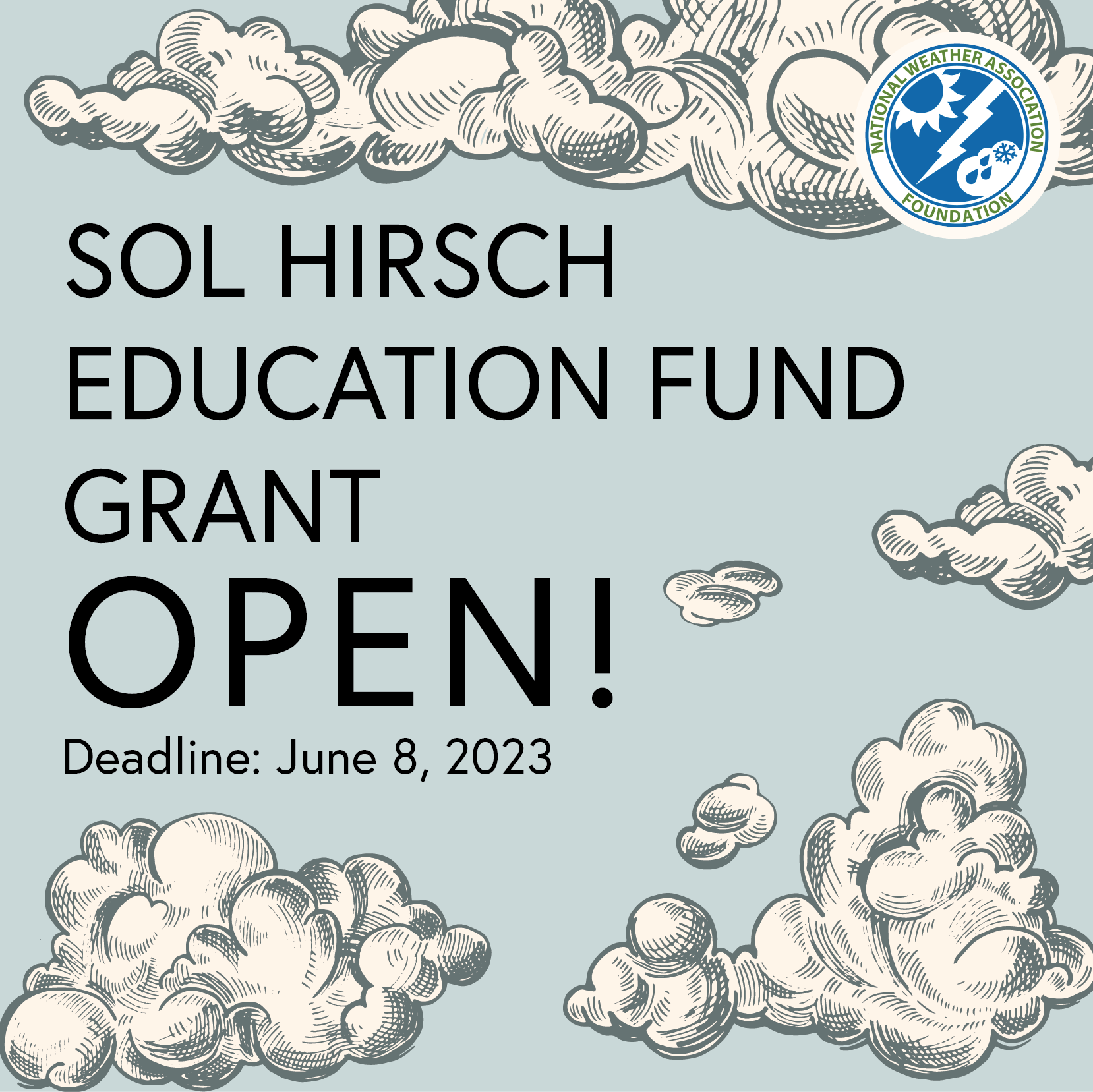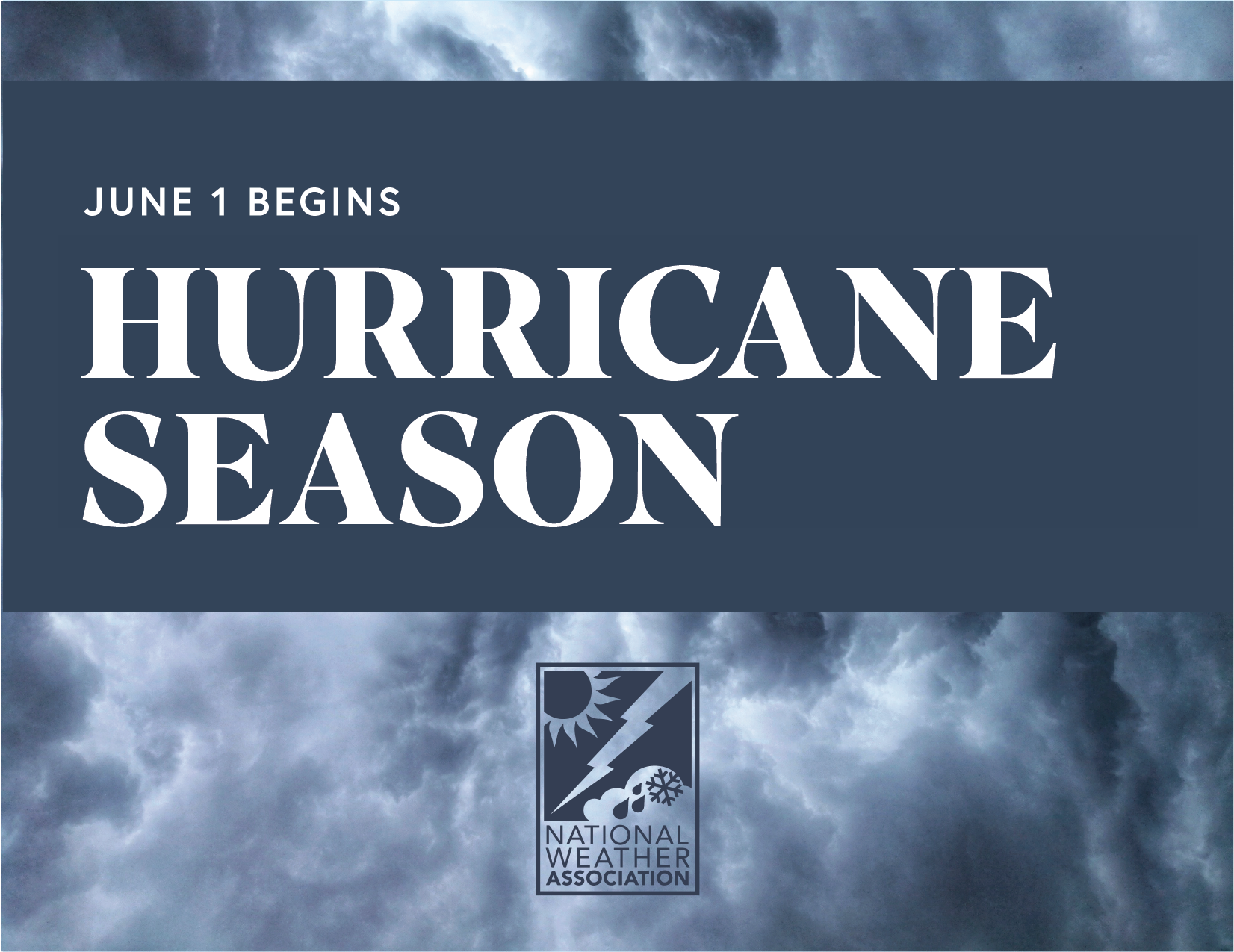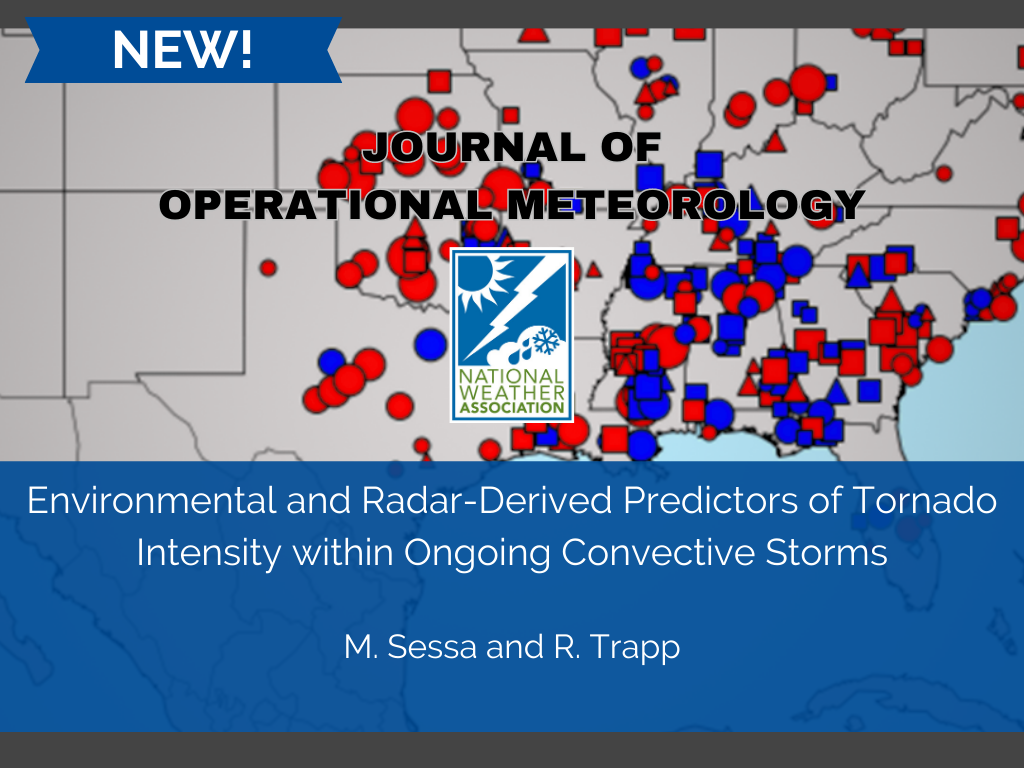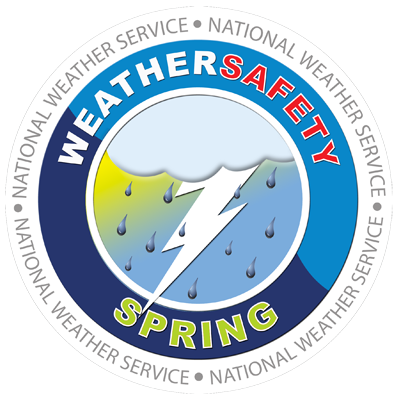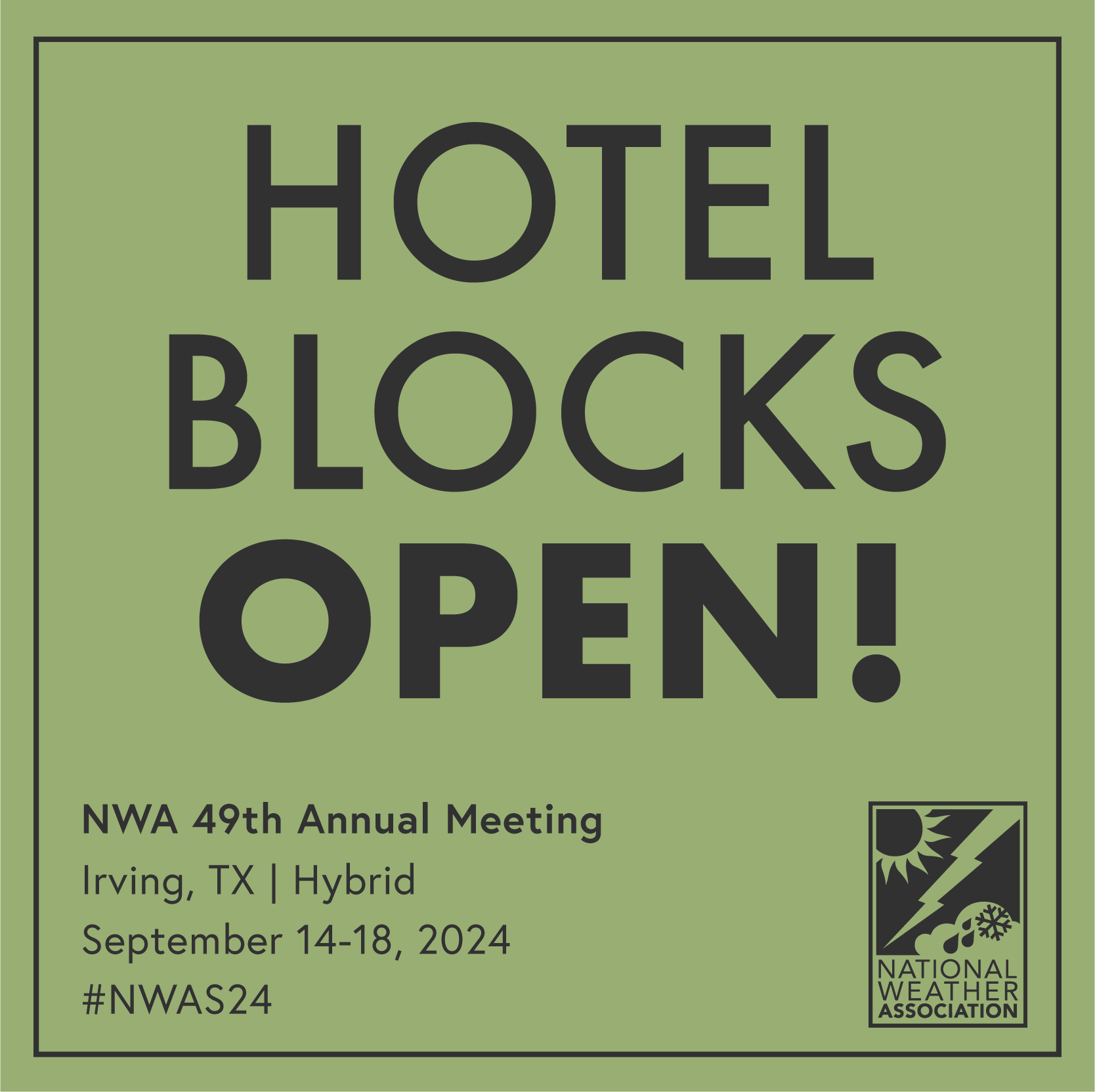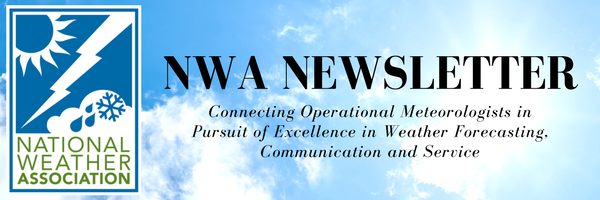 What's in this newsletter:
NWA Community Updates In lieu of a President's Message this month, I've asked for an article highlighting the NWA Community. Thanks to Nicole Van Every and Valerie Sharp for providing it.
- Christina
The National Weather Association has always enjoyed a rich tradition of collaboration and communication among its members, most notably at each Annual Meeting. Last December, the National Weather Association launched a new online platform: the NWA Community. This members-only benefit provides a safe, dedicated space for continued connection year-round. Here, members can share knowledge, discuss the latest developments in meteorology, and exchange valuable insights–ultimately serving to create a support network that enhances the collective understanding and advancement of weather-related fields. Members can seek advice, share best practices, and exchange information on emerging technologies, research findings, and forecasting techniques. Moreover, the online community enables the NWA to disseminate important updates, announcements, and educational resources, ensuring that its members stay well-informed and up-to-date with the latest news. Examples of recent posts include:
Members can also:
The NWA Community will continue to grow and develop, with exciting additional features to come in the near future. It serves as a catalyst for information, professional growth, and connection. However, it cannot thrive without you and your active engagement! If you have not joined the NWA Community yet, the steps are simple, as outlined below. We’d love to see you there, so come on over! Join the NWA Community TODAY!
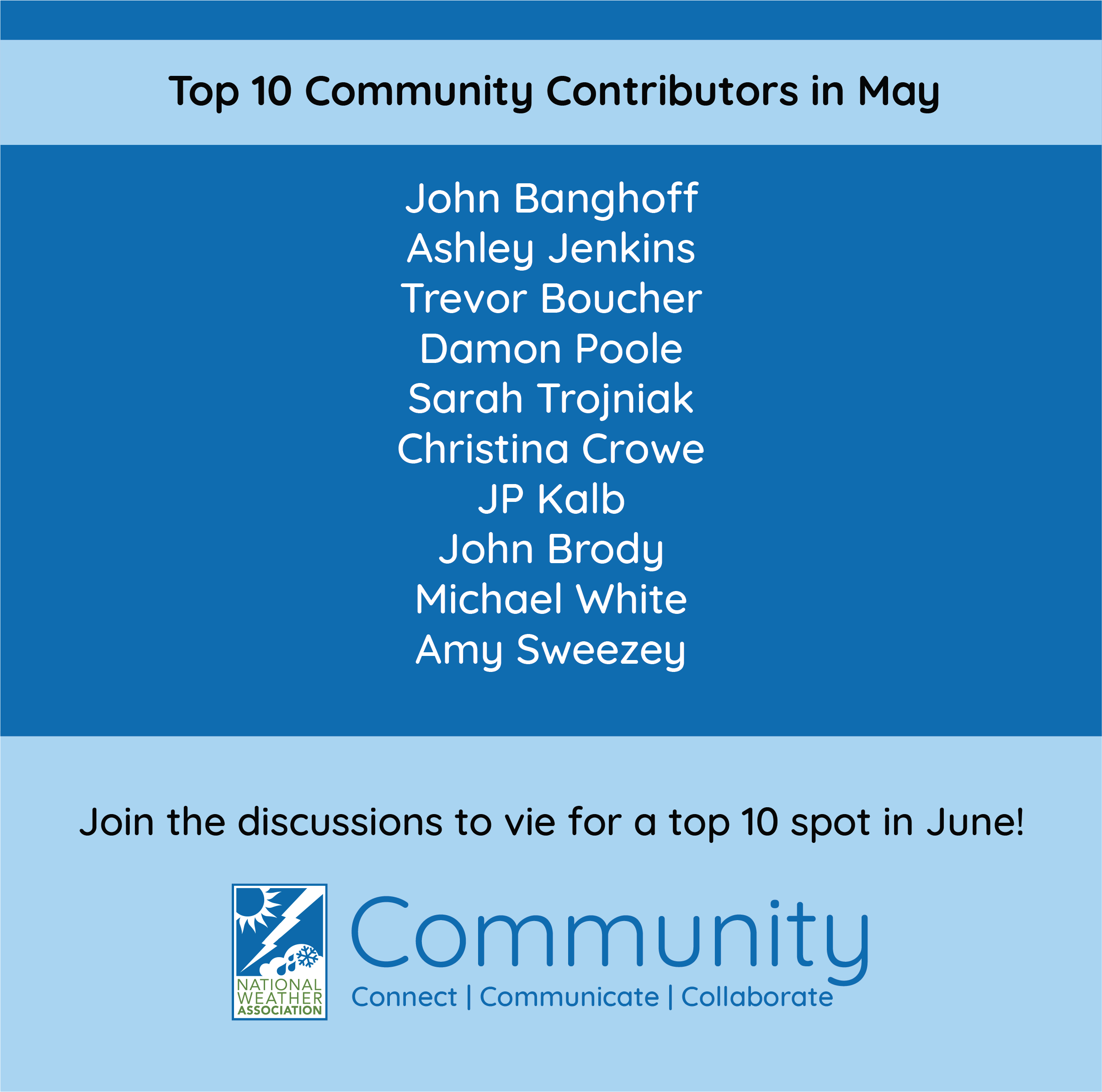 Come join us in the Community and participate in the discussions and more. While you are there, please provide feedback to the annual meeting themed attire days post in the 2023 Annual Meeting. There have been some creative suggestions.
NWA Remembers 1988 President George Frederick 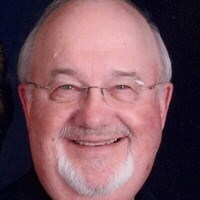
George L. Frederick, Jr. passed away on April 25, 2023. Among his many roles within the scientific community, George served as president of the NWA in 1986, president-elect in 1985, Vice-President in 1981, and a councilor in 1987 and 1990-1991, Member of the Year in 1986, He also served as president of the AMS. George served 30 years in the Air Force as a weather officer, retiring in 1993 as Commander of Air Weather Service. He served in Vietnam and helped manage the buildup of weather support during Operation Desert Storm. He led and managed weather units from detachment level to squadron to wing and finally the Air Weather Service which had oversight of weather support to the entire Air Force and Army. He earned numerous awards for his work including the Bronze Star and the Legion of Merit. After retiring from the Air Force, he worked as a meteorologist in the civilian sector for many years as well as an Adjunct Professor at the University of the Incarnate Word in San Antonio. Annual Meeting Updates: HOTEL BLOCK OPEN! The hotel block for the 2023 NWA Hybrid Annual Meeting is now open. It will remain open until Friday, August 18, 2023, or until the block is full. The reservation link and specifics about the hotel are located on the Meeting Website. The meeting will be a hybrid event meaning both virtual and in person attendance options are available. Watch the meeting website, Newsletter, member emails, and our social media sites for upcoming details on registration, exhibit options, and more. The NWA is looking for your feedback on our newsletter.
If an employee, NWA member, or member of the public believes any NWA policy, including the NWA Code of Ethics, has been violated, that individual may avail themselves of this complaint procedure. Please read our Grievance Policy for more information. NWA Foundation Announces 2023 MetSat and Freeman Past Presidents Award Recipients Congrats Amanda and Evan!
Amanda Wagner (she/hers) is a second-year master’s student at Villanova University studying the intersection of severe weather and social vulnerability. Her thesis research combines geospatial methods with social science and radar meteorology to identify communities vulnerable to tornadoes. She began her graduate studies after a few years in the professional world as a meteorologist at the National Weather Service in State College, PA, and as a geospatial engineer at Esri in Washington, D.C. In these roles, she sharpened her skills as a GIS analyst, specializing in web-based GIS applications and cartographic techniques for the natural sciences. She is passionate about the environment, combating social injustice, and helping unserved communities become better prepared for weather-related hazards. She is originally from southwest Virginia and completed her undergraduate degree at Virginia Tech. In her spare time, Amanda enjoys hiking or running with her golden retriever, Ellie, around Philadelphia.
Evan White will be a junior at The University of Oklahoma, majoring in Meteorology with minors in GIS and Chemistry. Evan served as a Pathways intern with the National Weather Service Office of Observations, working with programming in meteorology including machine learning. Evan's future plans include attending graduate school and working in research or operational meteorology. Your donations support the Foundation's scholarships and grants. Thanks to all who contribute! If you would like to make a donation, please visit our website. The Sol Hirsch Education Fund Grants for K-12 Teachers/Educators will close June 8, 2023. More information can be found on our scholarship website. By issuing these grants, we're helping educate future meteorologists. Shauna Tamar Harris wrote a lovely letter detailing how the Sol Hirsch Grant helped educate her students. Dear Members of the National Weather Association Foundation, My name is Shauna Tamar Harris and I was a 2021 recipient of one of your grants to bring weather education to my school, Freedom Classical Academy, in North Las Vegas, Nevada. I wanted to report to you that with your grant, I was able to introduce approximately 400 students in grade 6-8 on the concepts of weather and climate. My lessons, which I have made into Google Slides and are part of this digital package. These lessons were instrumental in helping students understand how weather affects the climate and how connected we are to the natural world. Upon reflection, when I teach this unit again, I will create a pre-test to establish a baseline in what the students do not know about this concept and then after the unit is complete, give the same test to compare growth. Furthermore, these lessons can and will be adapted for application to younger students in grades 3-5, thus educating even more students in the future. With the funds you granted to me I was able to purchase a digital 7-in-1 weather station that will be installed on our school’s roof and the digital display will be mounted in the classroom for classes to monitor and record the weather not only in real time, but the data collected will be used or future study when this unit is taught again next year to a new batch of students. Also purchased were several different weather books that have been a source of inspiration to many students - and will continue to be for others as we visit the topic of weather and climate in next year’s schedule. However, the students were most excited to get their hands on the anemometers and sling psychrometers! Most students were happily running around the field, excited to “catch the wind” and tell how fast the gusts were. They made it a competition to try to get the highest number which came in at around 5.6mph. (We had to wait for a windy day for them to work!) Thank you for making this learning possible for these students. It is an experience that many shall not forget for a while and maybe, just maybe, with the help you provided, have inspired some to study weather a bit more in depth than they would have without your intervention and gift. On behalf of the students you have helped this year, and those who will benefit in the future, I thank you again for your willingness to extend a hand in furthering the education of children on Weather and Climate. Your generosity is greatly appreciated and I hope we will live up to the integrity of Mr. Sol Hirsch and his desire to help educate today’s children. With utmost respect and gratitude, Shauna Tamar Harris If you would like to donate to the Sol Hirsch grant or any other NWA Foundation Scholarships, please visit our website.
Help us spread the word by sharing the Sol Hirsch Grant Flyer with teachers in your area. Don’t Fry! Protect Yourself From the Dangers of the Sun The NWS works along with the National Council on Skin Cancer Prevention to promote “Don’t Fry Day” which takes place on the Friday before Memorial Day each year, with this year’s observance occurring on May 26, 2023. Don’t Fry Day encourages sun safety awareness leading into the summer. Sunburns not only increase your risk of skin cancer, they also can make you more susceptible to heat illness and dehydration. Heat is one of the leading weather-related killers in the United States resulting in hundreds of fatalities each year. For those interested in learning more or supporting this initiative, you can find a comprehensive toolkit that includes additional background information, as well as ready to use social media posts, infographics, talking points, and more. Don’t Fry Day is an important day to revisit key tips to stay safe and healthy in the sun, as well as a great opportunity to be reminded of overall heat safety. Wherever your outdoor summer adventures take you, make sure to take action to enjoy the sun and warm weather safely, and protect yourself and your loved ones from skin cancer and heat related illness. 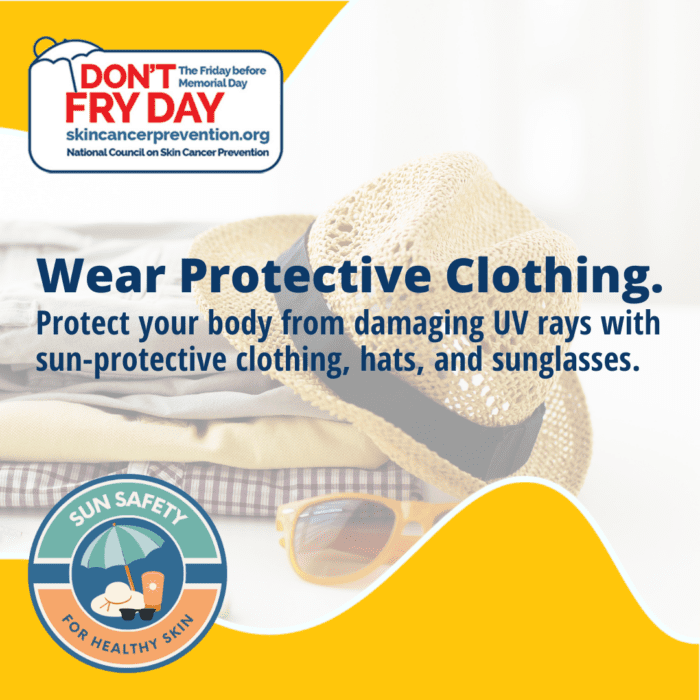 Go-Live of New NCEP Hurricane Model From NOAA/NWS: Effective on or about Tuesday, June 27, 2023 with the 1200 Coordinated Universal Time (UTC) cycle, the National Centers for Environmental Prediction (NCEP) Central Operations (NCO) will be implementing a new hurricane modeling system, Hurricane Analysis and Forecast System version 1 (HAFSv1), and beginning the process to decommission the legacy hurricane modeling systems at the end of the hurricane season. 1) A new hurricane modeling system, HAFS, will be added to the production suite. Two configurations of HAFSv1 will run operationally to produce similar TC track and intensity forecast model guidance as the legacy hurricane systems. 2) The two current operational hurricane systems, the Hurricane Weather Research and Forecast (HWRF) and Hurricanes in a Multi-scale Oceancoupled Non-hydrostatic (HMON) models, will continue running operationally for the 2023 hurricane season and are currently scheduled to be decommissioned on or about November 30, 2023. The legacy models will run a maximum of 3 storms at one time and the output will be delayed an average of 30 minutes compared to HAFS. NWS Soliciting Comments on Future Local Tropical Cyclone Watch/Warning From NOAA/NWS: The National Weather Service welcomes your feedback on proposed changes to local Weather Forecast Office (WFO) tropical cyclone watch/warning text products through June 8. These changes are intended to allow for: • Future storm surge and coastal flood hazards to be depicted as high resolution polygons (web page with details) • The issuance of zone-based tropical storm and hurricane watches/warnings from WFOs at the same time that the corresponding National Hurricane Center/Central Pacific Hurricane Center advisory is released (web page with details). Please send your feedback to [email protected] or use the anonymous feedback forms provided on the web pages listed above.
Storm names can be hard to pronounce. NOAA has produced a comprehensive list of future storm names and pronunciations.
New JOM Article Authors for this new JOM article are Michael F. Sessa and Robert J. Trapp, from the Department of Atmospheric Sciences, University of Illinois, Urbana, Illinois. ABSTRACT Analyses of Doppler radar data and environmental parameters for 300 tornado cases are used to propose an alternative framework for tornado intensity prediction during pretornadic stages of ongoing storms, conditional on tornadogenesis. This framework is founded on the robust relationship (R² = 0.69) between pretornadic mesocyclone width and the EF rating of the subsequent tornado. In contrast, the linear relationship between pretornadic mesocyclone intensity and EF scale is much weaker (R² = 0.29). Environmental information for each case was additionally used to explore relationships between environmental parameters and tornado intensity. Such relationships depend in part on how the tornado-intensity categories are distributed [i.e., nonsignificant (EF0–1) versus significant (EF2–5), or weak (EF0–1) versus strong (EF2–3) versus violent (EF4–5)]. Low-level shear parameters discriminate the environments of significant tornadoes from nonsignificant tornadoes, but not the environments of violent tornadoes from strong tornadoes. The converse is true for thermodynamic parameters. Operational implementation of this framework for the purposes of impact-based warnings will require real-time, automated quantification of mesocyclone width in addition to intensity and other attributes. The information gained from the pretornadic analysis demonstrated in this study would allow an operational forecaster to be aware of—and communicate—information about potential tornado intensity in warning text to the public before a tornado develops to better protect life and property. Currently, these relationships are being utilized in machine learning models for binary prediction of non-significant versus significant tornado intensity where skill is being demonstrated. September 2023
Have you checked out our job page recently? We update the job postings as they arrive, and they've been arriving more frequently. Check out the newest job postings or submit a job posting. National Weather Association | 3100 Monitor Ave, Suite 123 | Norman OK 73072 | 405.701.5167 Publisher: Janice Bunting, NWA CEO Submit newsletter items to [email protected] |
